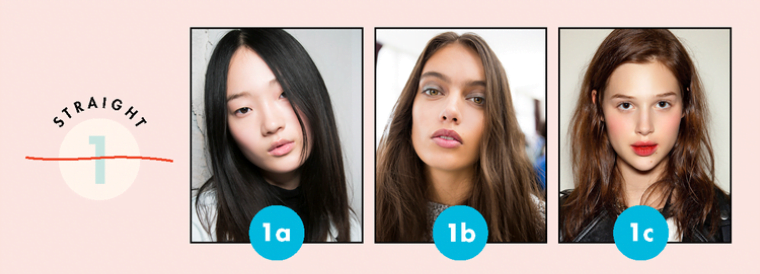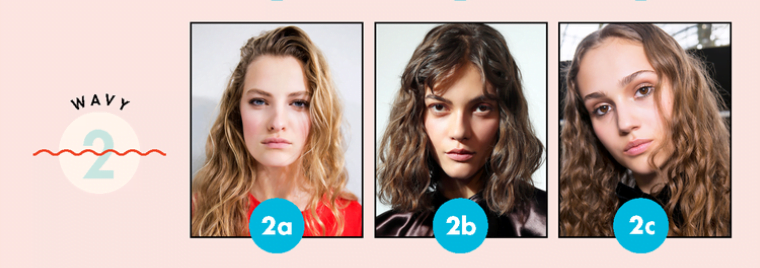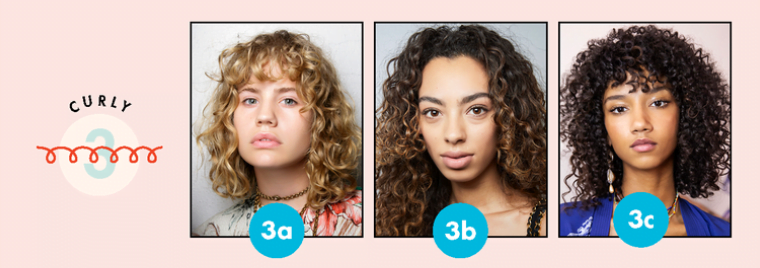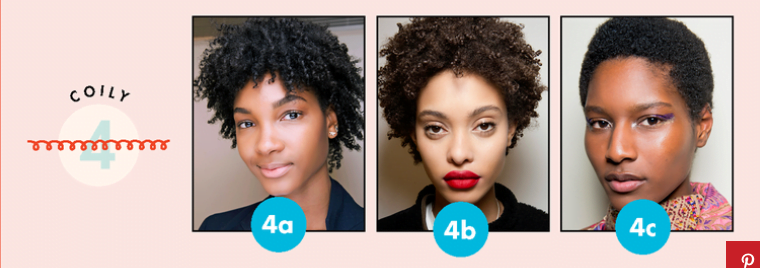Just like with skin types, there are different hair types. There are 12 different hair types in total that based on this structure, hair types fall into four texture-based categories: straight, wavy, curly, and coily. These over-simplified categories come in handy when determining how to treat and style your hair.
Although, it’s not an exact science—hair changes as we do, and is often affected by dynamic factors such as age, environment, and physical health.
Given below are the descriptions of each hair type and how you can identify your own: –
Type 1: Straight
The first type of hair is one of the easiest to identify, but still contains a wide range of textures. Type 1’s sub-categories are defined mainly on how easily the hair holds a curl
1A: Fine and silky, 1A hair dries straight and usually struggles to hold a curl.
1B: This type of hair has a fuller natural volume and may curl up at the ends, but has no “real” waves.
1C: This hair is mostly straight with a few waves hiding out. 1C holds curls exceptionally well but is prone to frizz.

Type 2: Wavy
Type 2 hair isn’t exactly straight, but also not exactly curly. It dries somewhere in between and, depending on its density, can have more or less S-shaped curls throughout.
2A: Hair is fine and silky, but dries with a little more volume or loose wave.
2B: That classic, beachy look with a medium texture and a little bit more frizz. These waves thrive with a hands-off approach.
2C: This type of wavy hair is the thickest and may have a few curls scattered here and there; 2C hair benefits from finger styling and a little extra moisture.

Type 3: Curly
Calling all curly girls. This hair ranges from light ringlets to big spirals and, given its shape and texture, tends to be the most delicate when it comes to frizz, product overuse, and heat damage.
3A: These are the largest curls and are often mixed in with some waves. Because 3A is on the finer side, it’s relatively easy to style and blow out, which means it requires a little extra TLC when it comes to heat.
3B: These tighter curls can range in size and hold their shape when pulled out (unlike 3A); 3B hair is a bit coarser, which means it’s usually full and susceptible to frizz.
3C: 3C curls are thick, pronounced, corkscrew curls that usually begin to grow out and away from the roots before cascading down.

Type 4: Coily
Finally, Type 4 hair is coiled, full of texture, and is also the most common hair type found in Black women. Given its structure, it’s usually prone to dryness and loves some serious hydration.
4A: These are tightly coiled curls that grow out and away from the roots. Since they’re smaller, they tend to retain moisture a bit better but can still be thirsty.
4B: Type 4B hair isn’t S-shaped like other curls and instead zigs and zags in different directions. It’s also usually frizzier and benefits from an oil or other frizz-control product.
4C: This hair is dense with high volume. It’s kinky and tightly wound with no definitive curl pattern and, like other Type 4s, benefits from heat protection and hydration

Again, finding your hair type and building your respective routine might take some experimenting. Hair, like everything else, is extremely personalized, and you have to find what works for you. Use these categories as a guide to healthy, happy tendrils, but the more you explore and familiarize yourself with your own hair, the better your results will be.
Comments are closed.